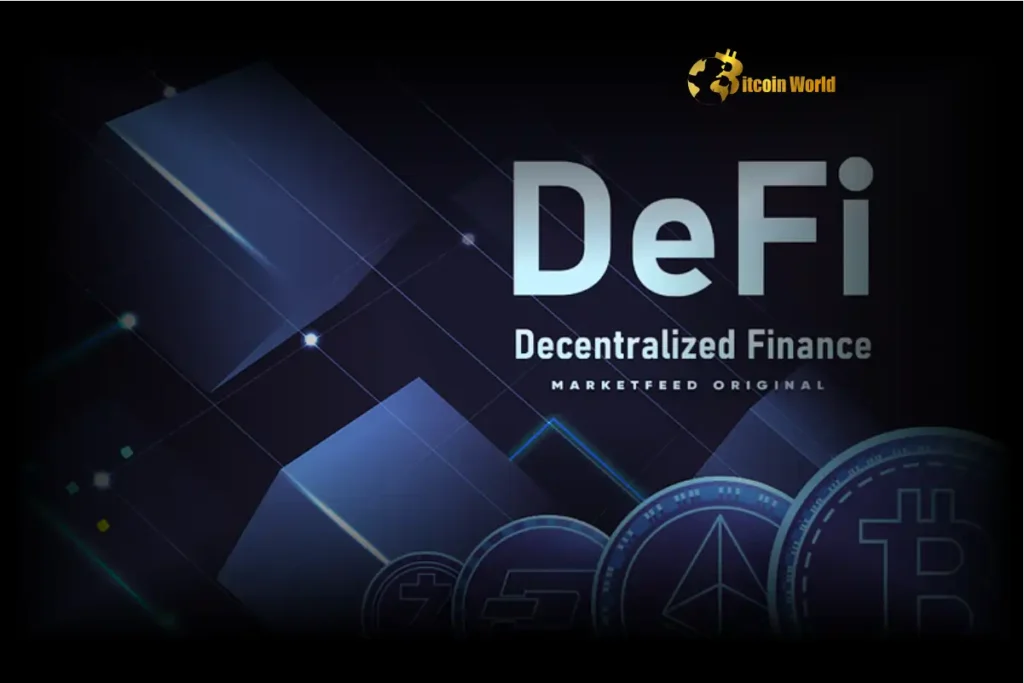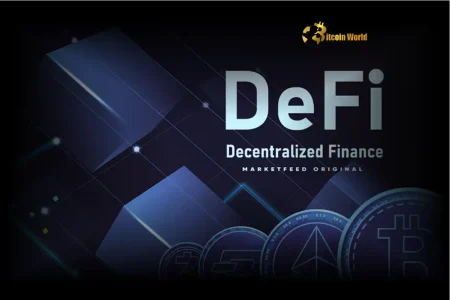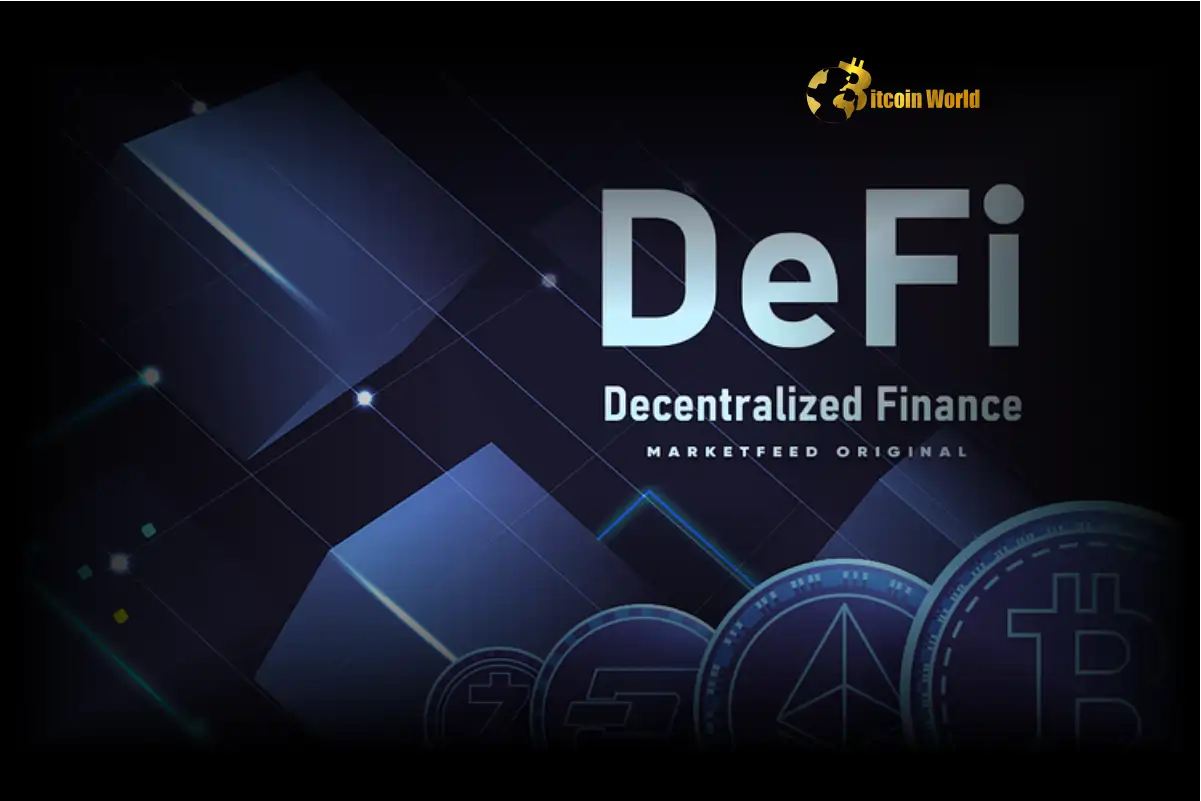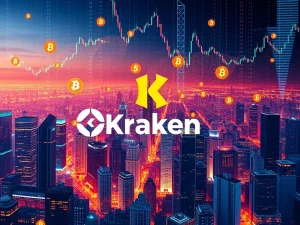Unlock Massive Potential: DeFi Trends Shaping Decentralized Finance

BitcoinWorld
Unlock Massive Potential: DeFi Trends Shaping Decentralized Finance
Welcome to the dynamic world of decentralized finance, often simply called DeFi. It’s a corner of the crypto universe that’s constantly evolving, pushing the boundaries of traditional financial systems. Understanding the latest DeFi trends is crucial if you want to navigate this space effectively and potentially capitalize on its opportunities.
What are the Hottest DeFi Trends Shaping 2024?
Decentralized finance isn’t standing still. New developments emerge rapidly. Here are some of the significant DeFi trends we’re seeing gain traction this year:
Real-World Assets (RWAs) on Blockchain: Bringing tangible assets like real estate, art, or commodities onto the blockchain to be used in DeFi protocols. This bridges traditional finance with decentralized systems.
Layer 2 Scaling Solutions: More DeFi activity is moving to Layer 2 networks to reduce gas fees and increase transaction speed on blockchains like Ethereum.
Liquid Staking Derivatives: Protocols allowing users to stake their crypto while still being able to use a tokenized version of their staked assets within other DeFi applications.
Decentralized Social (DeSoc) Integration: Exploring ways to integrate social elements and identity verification into DeFi for reputation systems and new financial primitives.
Enhanced Cross-Chain Interoperability: Protocols are improving the ability to seamlessly move assets and data between different blockchains, expanding the reach of decentralized finance.
These trends indicate a maturing ecosystem focused on efficiency, broader utility, and integration with the wider world.
Exploring Decentralized Finance: What Makes it Different?
At its core, decentralized finance aims to recreate traditional financial services—like lending, borrowing, trading, and insurance—using blockchain technology. The key difference? It removes intermediaries like banks and brokers.
Think of it this way:
Feature
Traditional Finance
Decentralized Finance
Control
Centralized institutions (banks, brokers)
Code (smart contracts) and community governance
Access
Requires accounts, identity verification (KYC), credit checks
Permissionless (anyone with internet and crypto can participate)
Transparency
Limited visibility into operations
Transactions recorded on public blockchains (pseudonymous)
Operating Hours
Business hours
24/7, 365 days a year
Fees
Varying fees, often opaque
Transaction fees (gas), protocol fees (transparent)
This shift offers compelling benefits, such as increased access for the unbanked, greater transparency, and the ability to earn passive income on crypto holdings through various protocols.
Diving into Crypto Lending and Borrowing: Earn and Access Capital
One of the most popular activities within DeFi is crypto lending and borrowing. Platforms like Aave or Compound allow users to deposit their crypto assets to earn interest (acting as lenders) or borrow assets by providing collateral (acting as borrowers).
How does crypto lending work?
A user deposits crypto (e.g., Ether, stablecoins) into a lending protocol’s liquidity pool.
These deposited assets are made available for borrowers.
Borrowers can take out a loan in a different crypto asset, provided they deposit sufficient collateral (usually more value than the loan amount, due to volatility).
Lenders earn interest from the fees paid by borrowers.
Smart contracts automate the process, including liquidating borrower collateral if its value drops below a certain threshold relative to the loan, protecting lenders.
This mechanism creates a peer-to-peer market for capital, bypassing traditional banks. It’s a core component of the decentralized finance ecosystem.
The Allure of Yield Farming: High Rewards, High Risks?
Another significant aspect of DeFi trends is yield farming. This involves users depositing crypto into various DeFi protocols to earn rewards, often in the form of additional cryptocurrency. It’s essentially seeking the best returns (yield) on your crypto assets across different platforms.
Common yield farming strategies include:
Providing liquidity to decentralized exchanges (DEXs) and earning trading fees plus governance tokens.
Staking tokens in protocols to earn staking rewards or protocol fees.
Lending assets on money markets to earn interest (as discussed in crypto lending).
Participating in liquidity mining programs offered by new protocols to distribute their tokens.
While yield farming can offer attractive returns, sometimes significantly higher than traditional savings accounts, it comes with risks. These include smart contract bugs, impermanent loss (for liquidity providers), and the volatility of the reward tokens.
Fortifying Your Investments: Addressing DeFi Security Concerns
As DeFi grows, so do concerns around DeFi security. The decentralized nature means there’s no central authority to recover funds if something goes wrong. Exploits, hacks, and rug pulls have unfortunately been part of the DeFi narrative.
Addressing DeFi security is paramount for both developers and users. Developers must prioritize rigorous smart contract audits and build robust, transparent protocols. Users must exercise caution and due diligence.
Actionable insights for enhancing your personal DeFi security:
Research Thoroughly: Only interact with reputable protocols that have been audited and have a track record.
Understand the Risks: Be aware of potential vulnerabilities, including smart contract risk and impermanent loss.
Start Small: Don’t commit large amounts of capital to new or complex strategies immediately.
Use Hardware Wallets: Keep your private keys secure offline.
Be Wary of Unrealistic APYs: Extremely high advertised yields can be a red flag for potential scams or unsustainable models.
Stay Updated: Follow news and community discussions about the protocols you use.
Understanding security is key in decentralized finance.
While risks exist, continuous efforts are being made to improve DeFi security through better auditing tools, formal verification methods, and community vigilance. Participating safely requires education and caution.
Conclusion: Navigating the Future of Decentralized Finance
The world of decentralized finance is a frontier of financial innovation, driven by exciting DeFi trends like RWAs, Layer 2 scaling, and cross-chain solutions. Opportunities abound in areas like crypto lending and yield farming, offering new ways to interact with and earn from your digital assets.
However, participation demands a strong focus on DeFi security. By staying informed, understanding the mechanisms, and taking proactive steps to protect your assets, you can navigate this evolving landscape with greater confidence and potentially benefit from the revolutionary potential of DeFi.
To learn more about the latest DeFi trends, explore our articles on key developments shaping decentralized finance and its future potential.
This post Unlock Massive Potential: DeFi Trends Shaping Decentralized Finance first appeared on BitcoinWorld and is written by Editorial Team












